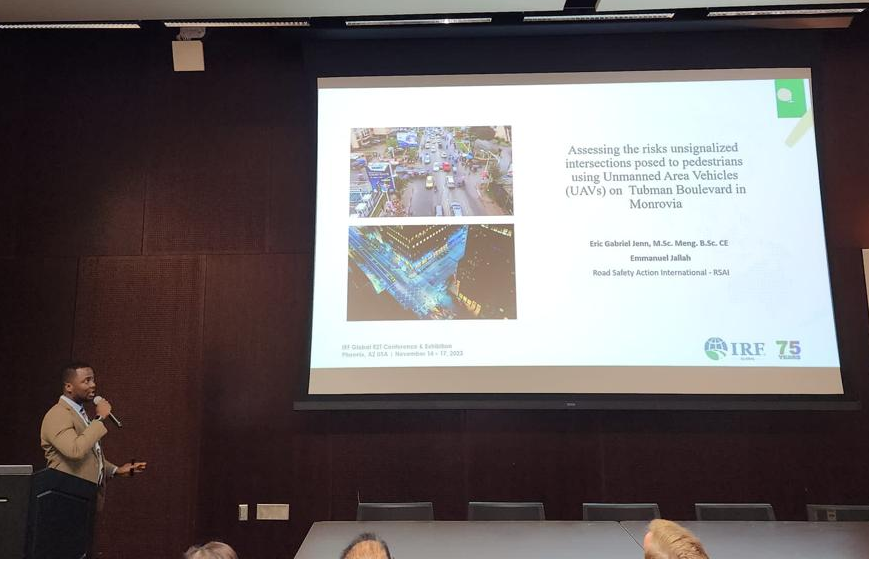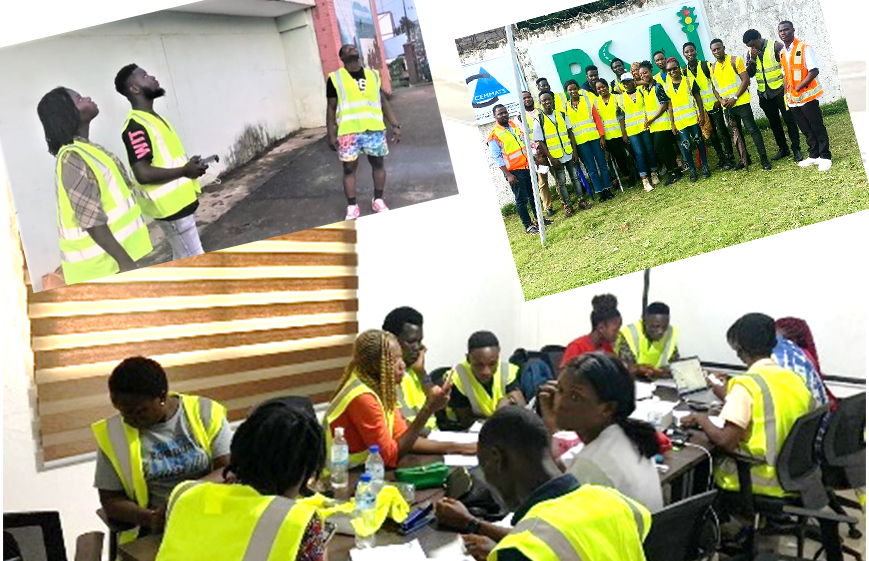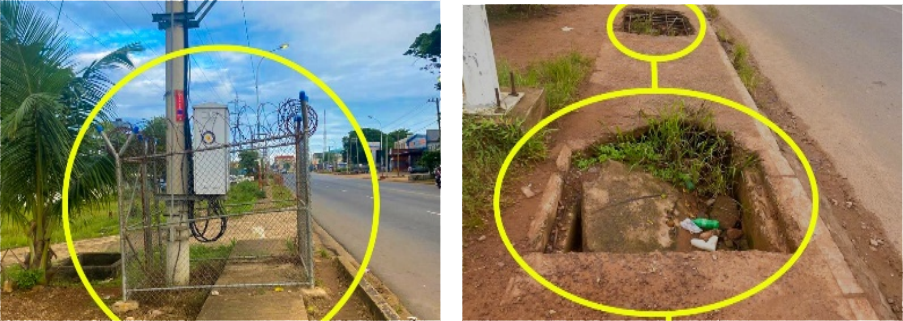ROAD SAFETY ACTION INTERNATIONAL PRESENTED ROAD SAFETY RESEARCH AT THE IRF GLOBAL ROAD TO TOMORROW CONFERENCE IN ARIZONA, USA
Road Safety Action International is a for-impact institution working to make roads safe in Africa, with its first operation opened in Liberia. Its core function is the prevention of road accidents. And as a for-impact organization, the need for data and insights to provide evidence-based tools to stakeholders (both road users and decision-makers) for decision making is paramount.
Henceforth, conducting research on road safety, especially within cities and
communities in which road accidents are alarming has become one of its primary and
immediate focus.
With the above focus, the Executive Director of Road Safety Action International
(RSAI), Engr. Eric Gabriel Jenn-Judgges delivered one of RSAI’s research papers
titled “Assessment of Pedestrian Risks at Unsignalized Intersections Using
Unmanned
Aerial Vehicles (UAVs) on Tubman Boulevard in Monrovia” at the just
ended
International Road Federation Global Road 2 Tomorrow Conference in Phoenix, Arizona,
USA.
The conduct of the studies that birthed this research paper was made
possible
through the financial and technical support of RSAI’s partners, including GIZ
Liberia, the World Health Organization, the Global Road Safety Facility of The World
Bank Group, the Liberia National Police (LNP), Ministry of Transport (MoT) and
Ministry of Justice in Liberia, and Conex Energy.

The project has been centered on the need to observe behavior of drivers and
pedestrians at the selected intersections and identify various pedestrian hazards
along the Tubman Boulevard (TB), which is the major corridor traversing the city of
Monrovia, with the aim to develop road safety interventions and policies for
pedestrians' safety along the TB.
The project through its local partner – Edana Photography intuitively combined the
use of UAV survey at six intersections along the TB to observed drivers and
pedestrians’ interactions using and an in-person pedestrian safety assessment along
the 11.2km TB. As part of the in-person pedestrian safety assessment.
RSAI recruited and trained senior engineering students from tertiary institutions in
road safety audit and assessment. The trained enumerators conducted the in-person
survey and identified various hazards along Tubman Boulevard.

The integration of these two methodologies provides RSAI with a comprehensive understanding of the interactions between drivers and pedestrians at the six intersections and risks that pedestrian faced when using the TB. Interestingly, the study found a total of 256 hazards along the 11.2 km corridor which is alarming. Open Storm drains and the absence of pedestrian sidewalks are the common hazards identified.

After the identification of the various hazards, each of them was placed into the Risk Matrix for further analysis. It was discovered that two-thirds of the hazards identified along Tubman Boulevard pose a high-risk impact to pedestrians as show in the hazard graph and the risk matrix below.

As part of the session titled "TS1.4: Vision Zero, Case Studies, and Strategies" the two major findings under each of the methods give insights to what needs to be do when corridor of similar nature is assessed. The findings are: